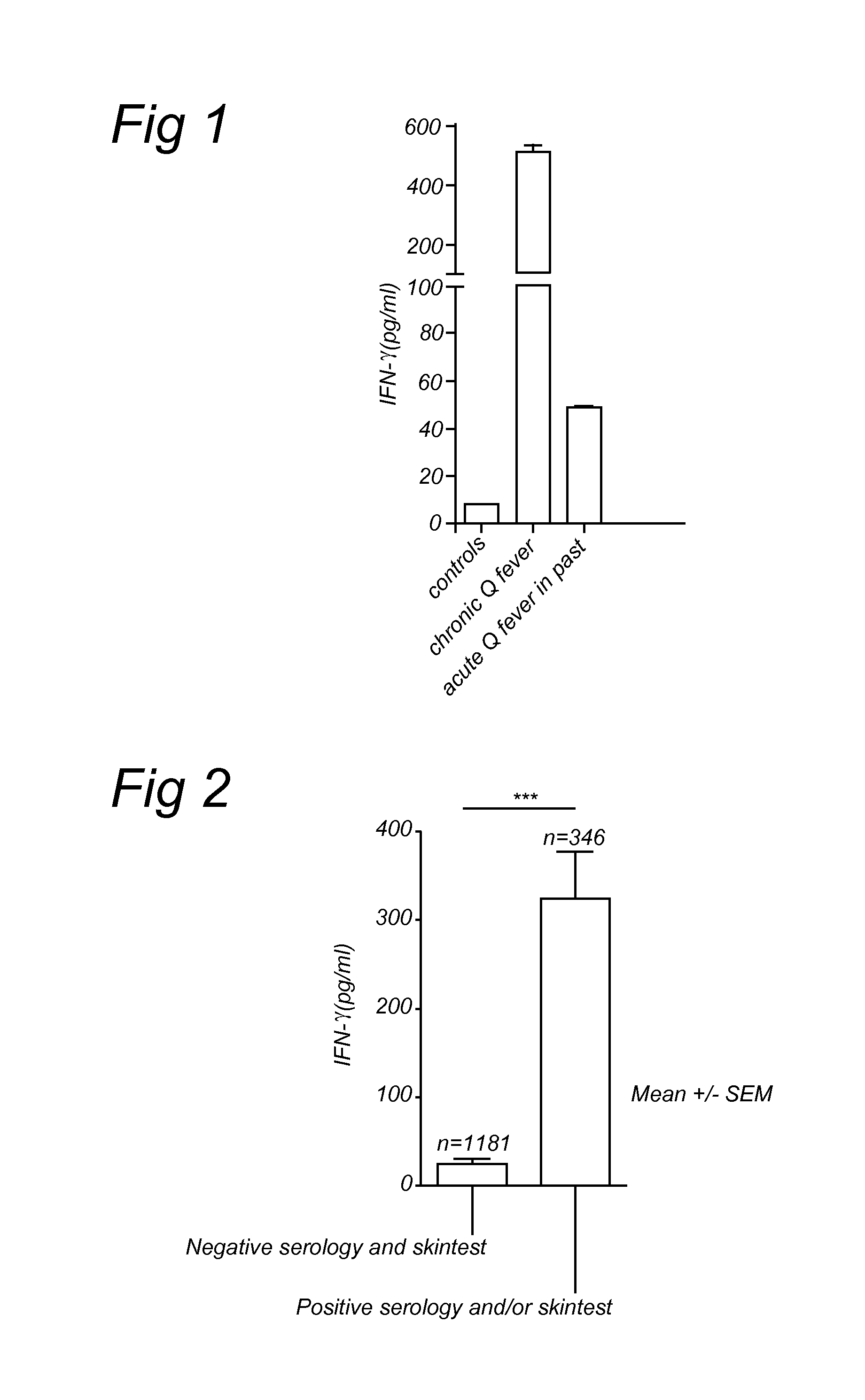Method for diagnosing Q-fever using a cellular immunological test
a cellular immunological and q-fever technology, applied in the field of q-fever diagnosis, can solve the problems of high mortality rate of chronic q-fever, difficult laboratory diagnosis, and difficult treatment of chronic q-fever infections
- Summary
- Abstract
- Description
- Claims
- Application Information
AI Technical Summary
Benefits of technology
Problems solved by technology
Method used
Image
Examples
example
Method
[0057]Blood samples were taken from patients and healthy individuals in EDTA vacutainer tubes (Becton and Dickinson, Leiden, The Netherlands). From these samples 200 μl were diluted 1:5 in culture medium (RPMI 1640) and incubated in 24 wells tissue culture plates (Costar, Badhoevedorp, The Netherlands). As a stimulus, 100 ng / ml of formaldehyde-inactivated (i.e. formalin fixated) Coxiella burnetii phase 1 Henzerling Strain (CSL limited, Australia) was added to these cultures (FIG. 1). Formaldehyde-inactivated cells were prepared by transferring or incubating them with 4% formaldehyde for one hour. Subsequently cells were washed several times with PBS. No stimulus was added to the control cultures. The cultures were incubated at 37° C. and 5% CO2 for 48 hours. Heat-killed or heat-inactivated Coxiella burnetii 9 mile strain (CVI, Lelystad, The Netherlands) was used in the second study (FIG. 2). Identical protocol, except 24 hours incubation. Heat-inactivated cells were prepared b...
PUM
| Property | Measurement | Unit |
|---|---|---|
| size | aaaaa | aaaaa |
| weight | aaaaa | aaaaa |
| nucleotide acid sequence | aaaaa | aaaaa |
Abstract
Description
Claims
Application Information
 Login to View More
Login to View More - R&D
- Intellectual Property
- Life Sciences
- Materials
- Tech Scout
- Unparalleled Data Quality
- Higher Quality Content
- 60% Fewer Hallucinations
Browse by: Latest US Patents, China's latest patents, Technical Efficacy Thesaurus, Application Domain, Technology Topic, Popular Technical Reports.
© 2025 PatSnap. All rights reserved.Legal|Privacy policy|Modern Slavery Act Transparency Statement|Sitemap|About US| Contact US: help@patsnap.com


